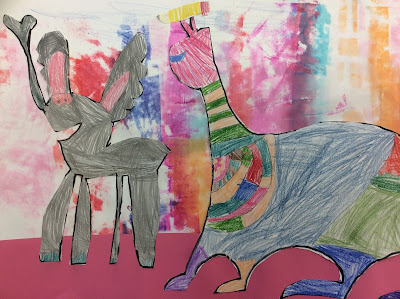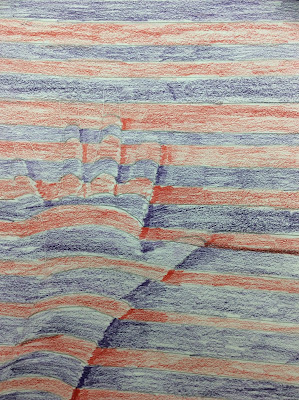One great irony is that this corporation, thanks to style savvy, recently revived itself. But let's not encourage kids to become artists, because where would that get you? Good gracious. As if I am not already spending days combating people who don't understand the value of the arts in education, now I find myself justifying why it is a valid career option.
Let me be clear. As an elementary art teacher, I do not want to knock Presidential hopefuls, nor our world's astronauts (who tend, actually, to be particularly creatively resourceful people). But let's consider six reasons the world really needs artists, and that we'd better have people who aspire to become them.
1. Artists are the reason that we have beauty in the world. The clothes you wear, the art on your walls, the furniture and jewelry and home you so enjoy? Thank an artist. Ditto for your smartphone, television and movies you enjoy, and the music to which you listen.
2. Artists are creative problem solvers, and are not afraid to make mistakes. They are the original scientists, experimenting with materials and observing our world and its phenomena in a deep, meaningful way.
3. Artists are philanthropic. They fill your world with color. Graffiti and murals, they are all there for you to enjoy, to brighten your day a little with thought and beauty.
4. Artists can create their own careers, either being their own bosses or joining into communities and corporations that need them. Artists show us that they can be themselves and marry work with the creative visions they believe in, since economic success alone does not translate to happiness.
5. Artists can use images to change another person's thinking without words or arguments. Art can open hard conversations and facilitate truth-telling. More laws and rules do not transform the hearts of human beings.
6. Artists create outlets for big feelings- their own, and yours, too. Hoping to raise a child who doesn't bottle up his or her feelings? Try buying him or her a poetry journal, or a sketchbook and crayons. Think of the last song, film, or painting that made you cry. Artists understand emotions, can express beautifully, and can generate them in us when we least expect it.
So, you want to buy one of those shirts, and hope to raise a child who wants to be President? Hope you have some artists on that staff to drive the difference between a ho-hum campaign and a dynamic, visually and creatively alive one that grabs voters.
"Every child is an artist. The problem is how to remain an artist once we grow up." -Pablo Picasso
Want to suggest that Old Navy reconsider their approach to supporting the artists who make them a successful brand? Drop them a line at custserv@oldnavy.com


























































